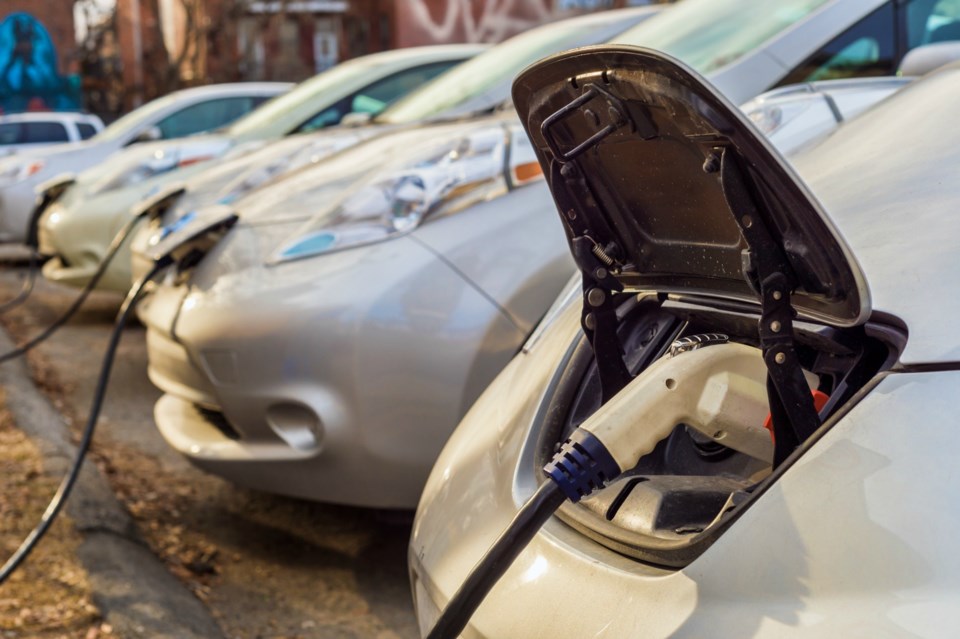Editor’s note: This story was originally published by Rocky Mountain Public Media and was shared via AP StoryShare.
DENVER — In mid-June, Colorado and other states experienced unprecedented heat. On June 15th, Denver broke records from 1952 and 1993, and with many people cranking up their air conditioning and fans, power outages occurred.
The Alliance Center, a coworking and event space in Denver, thinks a creative approach to electric vehicle charging could help in these extreme temperature circumstances, which will become more common due to climate change.
“We're an organization that strives to allow sustainability to be easier," said Chris Bowyer, Director of Building Operations at the Alliance Center. "We work with collaborating. Whether it's with our tenants or with an outside organization, that's what we work the hardest towards."
The center’s newest project is a perfect example of this collaboration. With Fermata Energy, Colorado CarShare, and Colorado Smart Cities Alliance the organization installed one of the first Vehicle-to-Building (V2B) or Vehicle-to-Grid (V2G) technologies in the nation at their building.
In addition to being able to charge electric vehicles, Bowyer told Rocky Mountain PBS the vehicle—specifically the batteries—can provide power to a building or to a home.
During peak energy, which is typically during the afternoon in the summer, the Alliance Center can use energy stored in the vehicle and reduce energy pulled from the grid. During the most recent heat wave, the building used the car every afternoon.
The car doesn’t just serve as a battery for the building and sit parked, plugged-in the whole day. Colorado CarShare manages the car, sharing it with its several hundred members in the Denver and Boulder areas. This means that the Alliance Center must determine when to reserve the car for these peak hours. This is where Fermata Energy provides data and support to calculate when Bowyer should manually reserve the vehicle.
Bowyer hopes for this process to become easier and more automated in the future where he tells us they are able to feed weather patterns into the system and reserve it on the fly, without having to have the human input.
While this bidirectional charging system is still in the research and development phase, the Alliance Center and its collaborators think it could provide a number of opportunities on top of reducing emissions and saving money.
"You can also utilize the vehicle in the event of some sort of power outage, for resiliency, for a customer that doesn't have power for their home or for their building," said Bowyer. "That vehicle or groups of vehicles could be used to provide a resource to community members or building occupants or your home in case it's very hot outside are very cold outside.”
During the mid-June heat wave, Denver Mayor Michael Hancock announced 10 cooling stations at recreation centers. Bowyer thinks installing V2B or V2G systems at such community places could be hugely helpful. In fact, a charger is already installed at a recreation center in Boulder.
“I know Fermata is also looking at a church here in the Denver area where that church could be used as a gathering place in the event of a natural disaster,” added Bowyer.
On top of that, he said this same technology could be used with buses or much larger fleets.
“Hopefully, the data that comes out of it can show how many vehicles I would need or how many buses another property or another entity may be able to use to… be able to provide a resource to community members,” said Bowyer.
However, there are certain limitations. For example, not all car companies allow for bidirectional charging and a single vehicle isn’t yet able to power an entire building like the Alliance Center in case of a power outage. But Bowyer is very interested in looking at the data to determine what kind of impact it can have.
“The opportunity for Vehicle-to-Building or Vehicle-to-Grid is a new technology that’s certainly causing ripples within utilities, and we're hoping that this continues to go in that direction,” said Bowyer.


.jpg;w=120;h=80;mode=crop)
